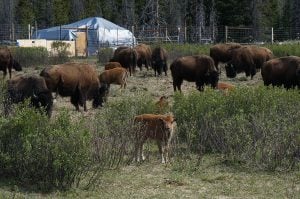
Places
Back where they belong
Nearly wiped out in Alberta in the 1800s, plains bison are making a historic return to Banff National Park
- 2148 words
- 9 minutes
This article is over 5 years old and may contain outdated information.
People & Culture
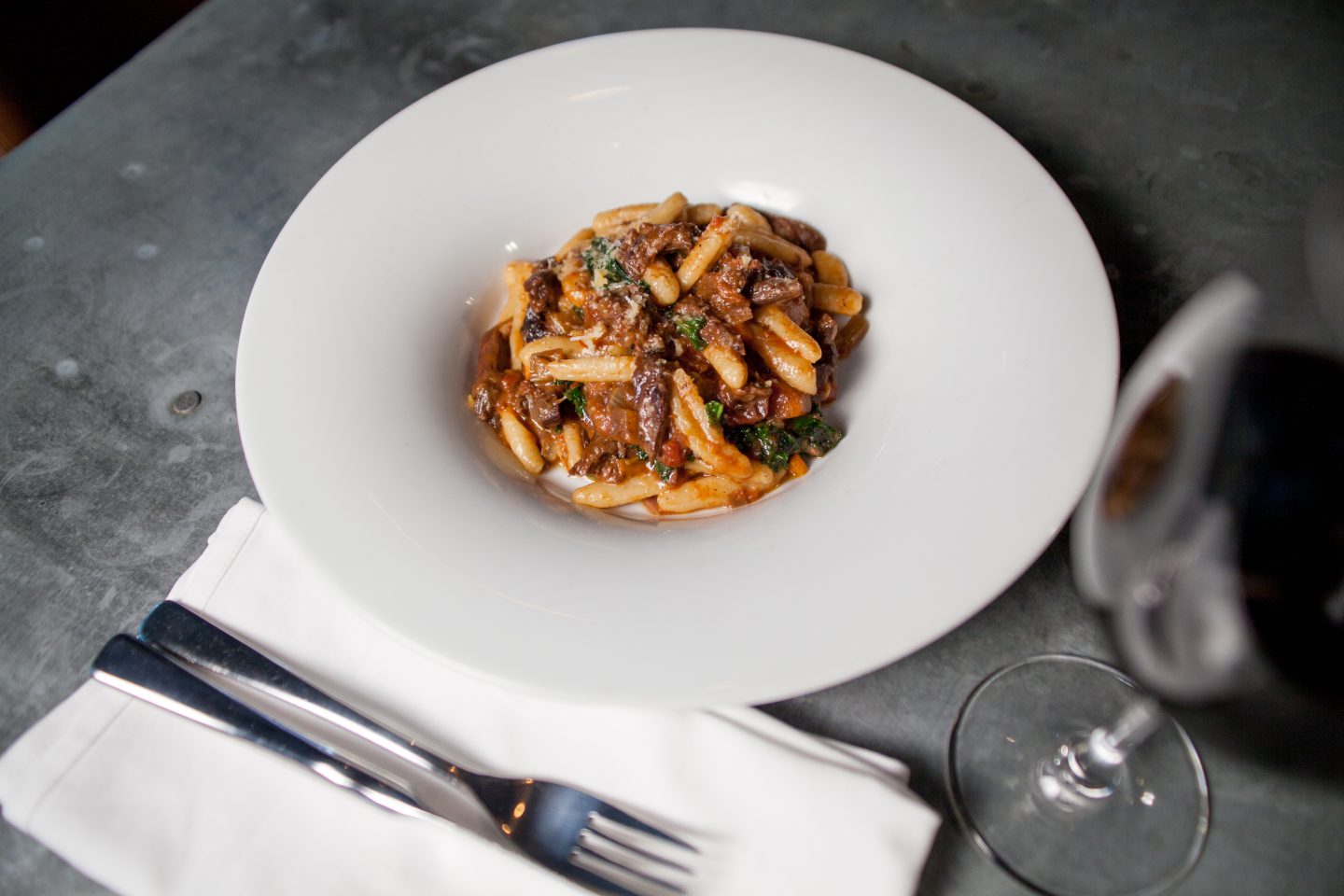
Step aside, bland chicken breasts. See you later, ho-hum pork chops. Au revoir, flavourless beef patties. Wild game is cropping up on menus across the country, and chefs like Michael Hunter, owner of Antler Kitchen & Bar on Dundas West in Toronto, are at the forefront of the movement, introducing diners to the delicious flavours of wild boar, duck and even squirrel. Here are some of Hunter’s favourite recipes to get you aquainted with wild game. Bon appétit!
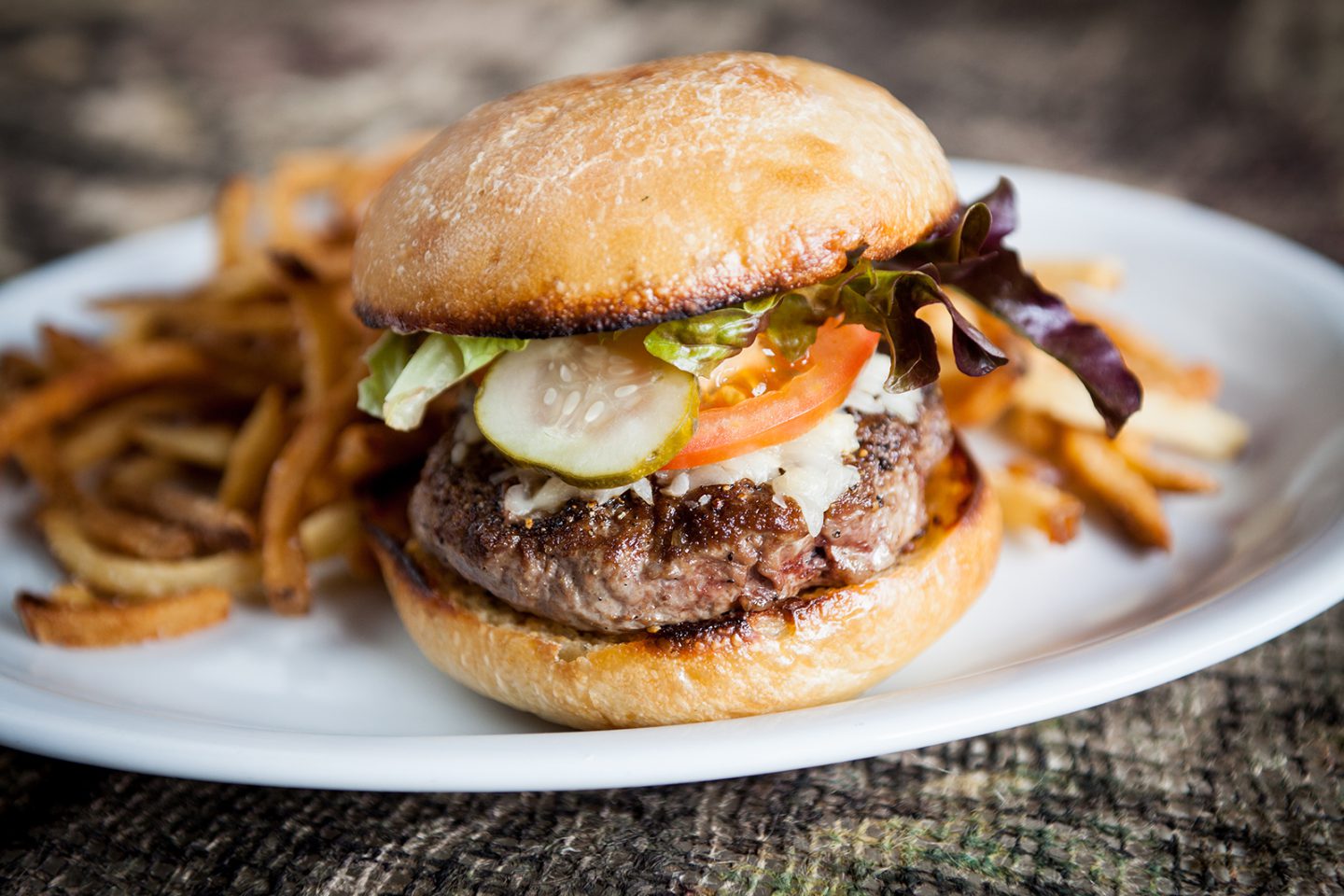
Makes 8 burgers
Mix all ingredients in a stand mixer using the paddle attachment or in a large bowl by hand until well incorporated.
Weigh out portioned balls of meat to 168 g. (6 oz.) and pat tightly into patties by hand or with a burger patty press.
Refrigerate on a tray lined with wax paper until ready to grill. Chilling the burgers before grilling will keep them from breaking apart while grilling.
Season both sides with salt and pepper and sear on a preheated cast-iron pan or preheated bbq grill. Both methods are great ways to cook a burger, but give different results. The cast-iron pan will give the patty a crispy golden crust, while the grill with provide a more smoky flavour.
Flip burgers once, after three to four minutes per side. Flipping too often can cause the patty to fall apart and not get those flavourful char marks. Cook to an internal temp of 51 C (125 F) for medium rare or 57 C (135 F) for medium (pink).
Toast the burger buns on the grill, then place each burger on the bottom bun.
Top with smoked cheddar, as well as your favourite condiments.
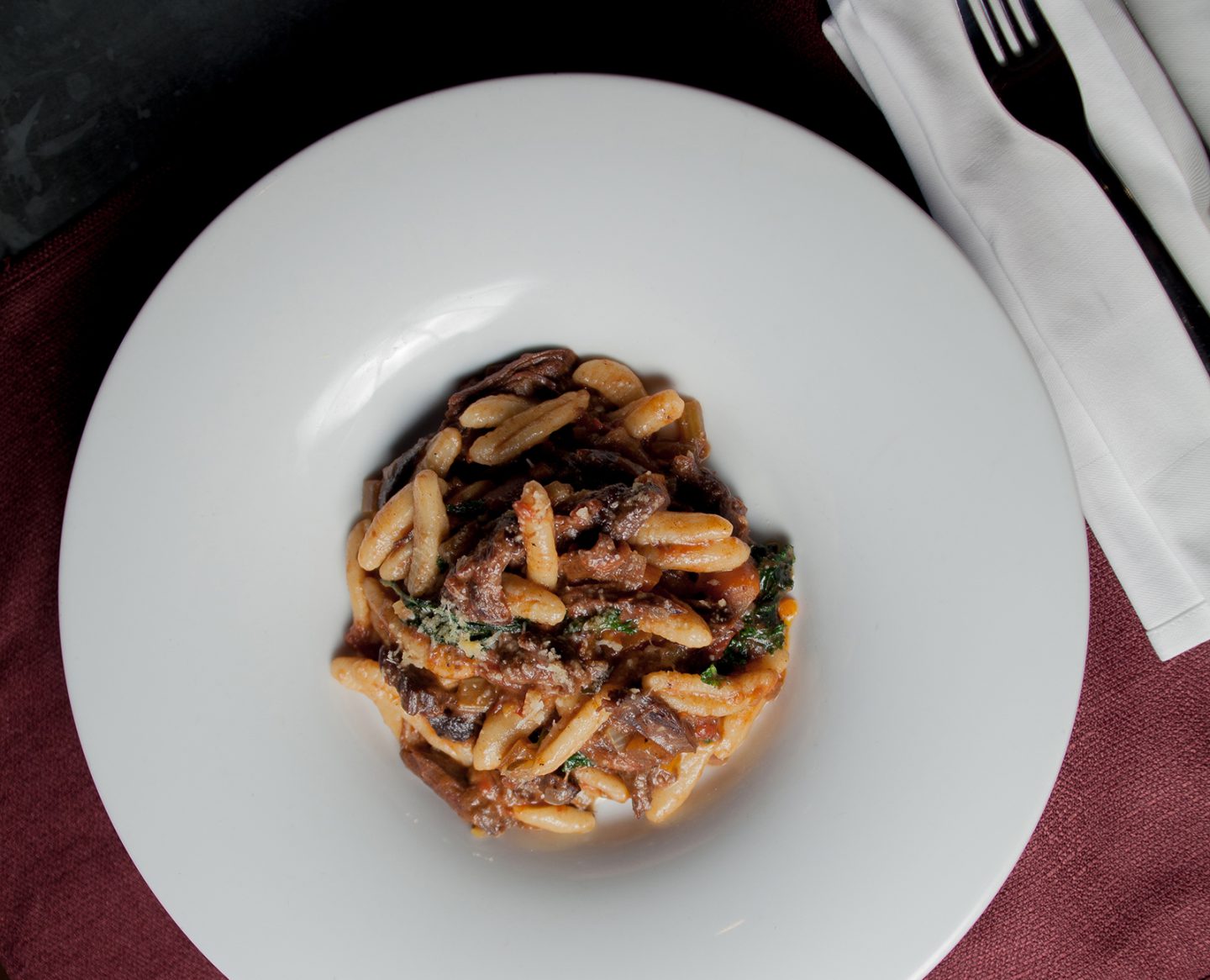
Serves 6-8
Place all ingredients in your bowl and mix with your hands until the dough comes together. Depending on the moisture content of the ricotta you are using, this recipe may not need water.
Transfer to a table and knead the dough until it is a firm smooth ball.
Cover with a damp cloth or plastic wrap and let rest for 30 minutes.
Cut dough into six equal size pieces.
Roll out into logs one-centimetre thick and partially flatten into strips.
Feed each strip of dough into the machine, while turning the handle.
Spread out dumplings onto a baking tray, dusting with extra semolina to keep from sticking.
If you do not have a cavatelli machine and are using a gnocchi board, follow instructions one and two. Then cut log into 0.5-centimetre rectangular slices and push dough downward on the gnocchi board with your thumb, curling the dough and creating a concave center with grooves on the outside.
Preheat skillet.
Cut vegetables into medium dice. Crush and mince garlic.
Season venison meat generously with salt and pepper.
Add oil to the hot skillet and add venison to the pan. Do not flip until the meat is caramelized and brown.
Transfer to a roasting pan, then add vegetables to the skillet. Sauté until beginning to caramelized. Add minced garlic and stir. Deglaze with red wine.
Transfer vegetables to roasting pan, add stock and bouquet garni, dried mushrooms and cover with foil.
Bake at 163 C (325 F) for 2.5 hours or until meat is tender. Pick meat with a fork into large pieces and leave in the liquid to cool.
Fill one of the pots with salted water and bring to a boil.
Dice the root vegetables. Tear kale off stem and roughly chop.
Heat second pot and sauté the vegetables until tender in the butter and olive oil.
To the vegetables, add the braising liquid from the neck and pulled venison meat. Reduce until thick.
Cook the fresh cavatelli in the pot of boiling water for three to five minutes.
Transfer cavatelli to the ragu, stirring with the wooden spoon. Add cheese and cook for an additional two minutes.
Spoon into serving bowls and top with more grated parmesan.
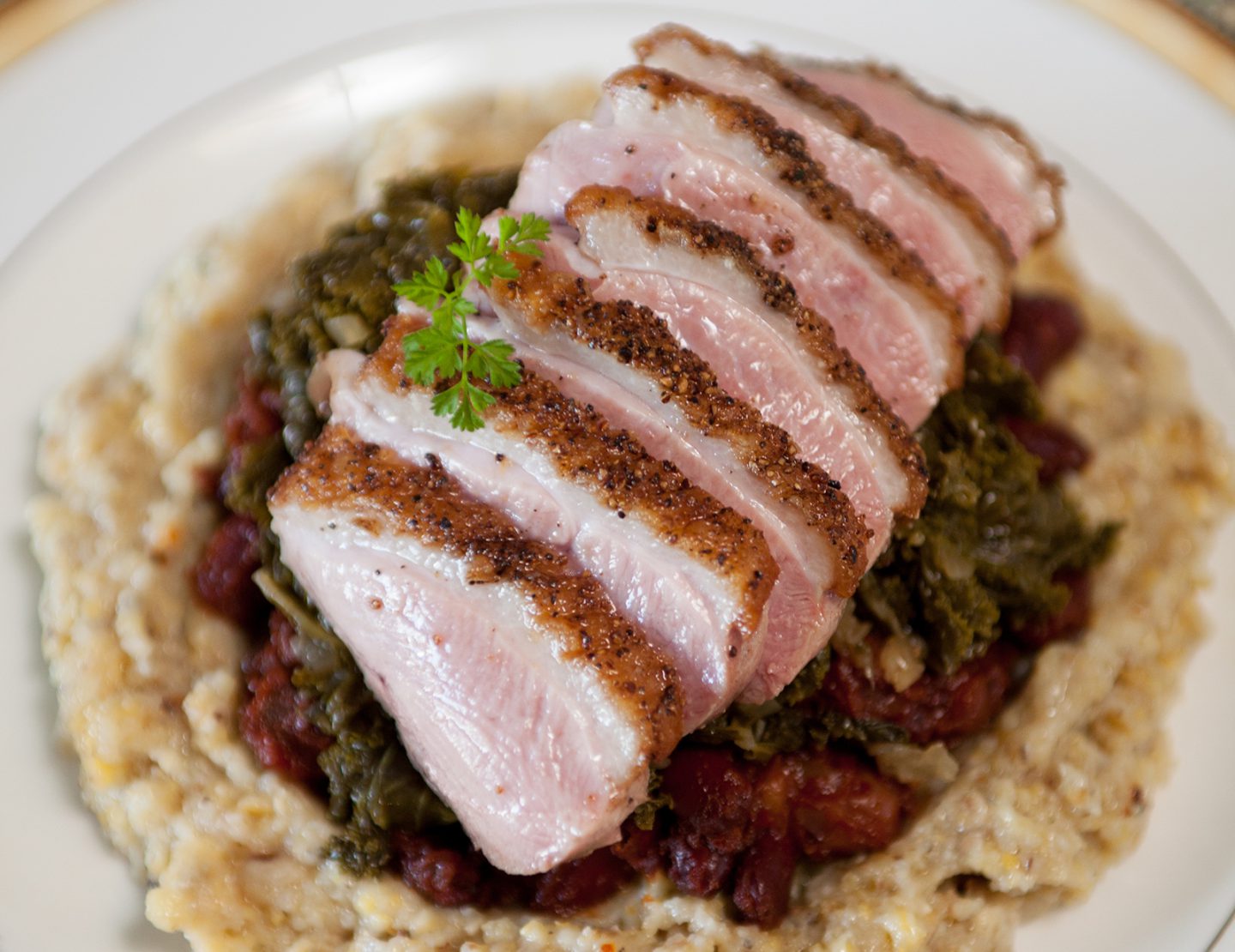
Serves 4-6
Cook the beans, sliced chorizo sausage and herbs in the tomato purée with the spices, molasses and maple syrup for eight to 10 minutes
Soak grits in 2 L. water and let sit out overnight covered at room temperature.
In a medium-sized, heavy-bottom pot, simmer the grits on very low temperature for one to two hours or until thick.
Once the water has been absorbed and the grits are soft, add cheddar, butter and salt. Whisk to combine.
Season duck breasts with salt and pepper.
Pre-heat cast-iron skillet on medium-high heat.
Add vegetable oil, then turn the heat down to low-medium and sear the duck breasts skin side down for three to four minutes or until skin is crispy. If the duck starts to curl, a small pot or a pan can be used to press them down so the skin cooks evenly.
Flip the breasts and gently cook the meat side down for one minute. If using a smaller wild duck breast that is much thinner than a mallard, adjust cooking times accordingly.
After searing the breasts, let rest for two minutes before slicing.
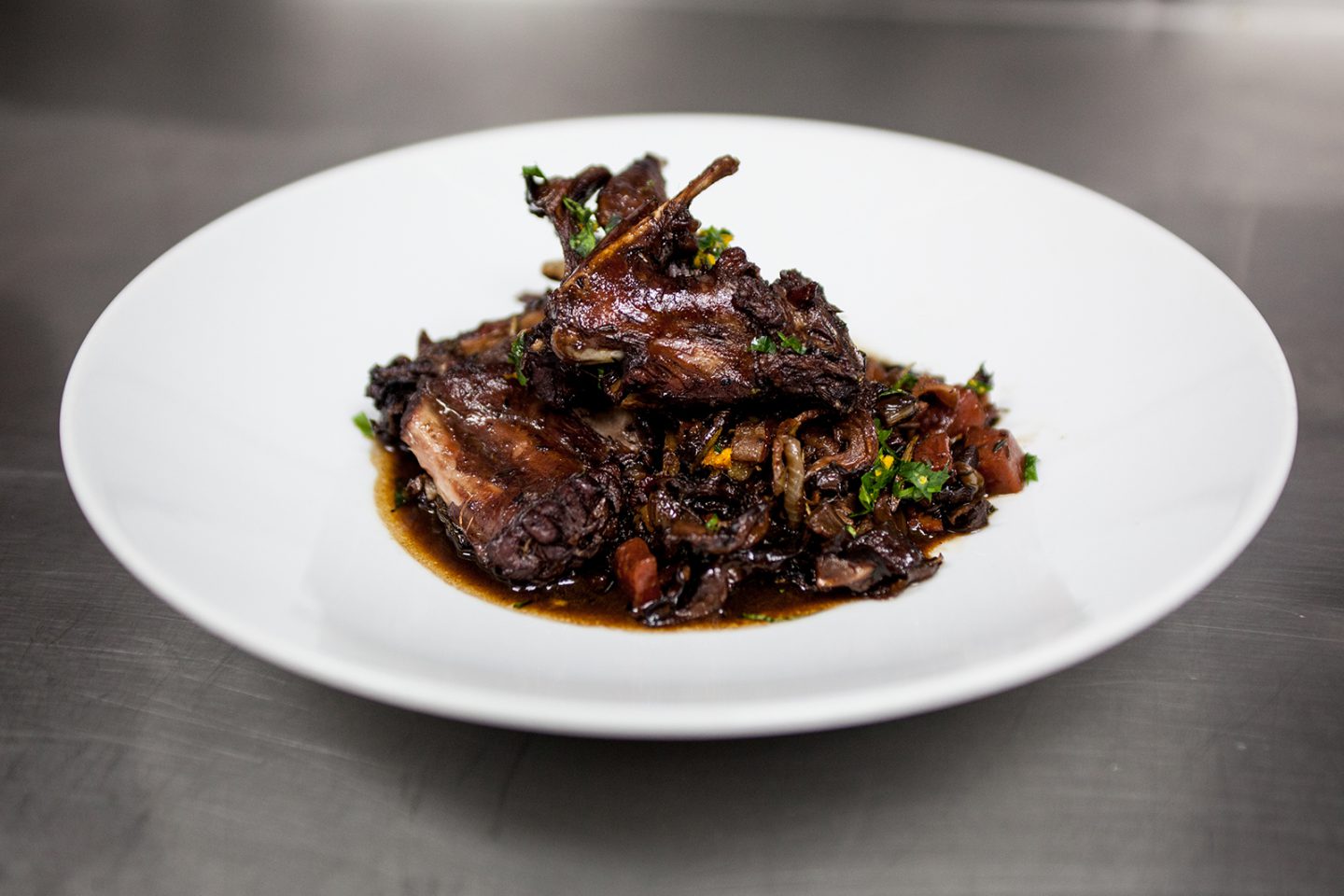
Serves 4
Preheat a large heavy-bottom pot on medium heat.
Chop the squirrel into four equal pieces, season with salt and pepper and dredge with flour.
Add a tablespoon each of oil and butter, the squirrels and bacon to the pot. Cook the squirrels until golden, and flip to cook all sides.
When the squirrels are crispy and golden, remove from the pot and add the pearl onion, celery, mushrooms and garlic. Cook for three to four minutes until the onions are translucent. Deglaze with the wine and stock. Add the bay leaf and thyme, salt pepper and chilli flakes.
Add the squirrel back to the pot and cover. Bake at 163 C (325 F) until the meat can be pulled from the bone and the back legs are tender (about 1.5 hours.)
Remove the squirrel and reduce the liquid until it can coat the back of a spoon. Spoon everything into deep plates or bowls and garnish with chopped parsley.
Are you passionate about Canadian geography?
You can support Canadian Geographic in 3 ways:
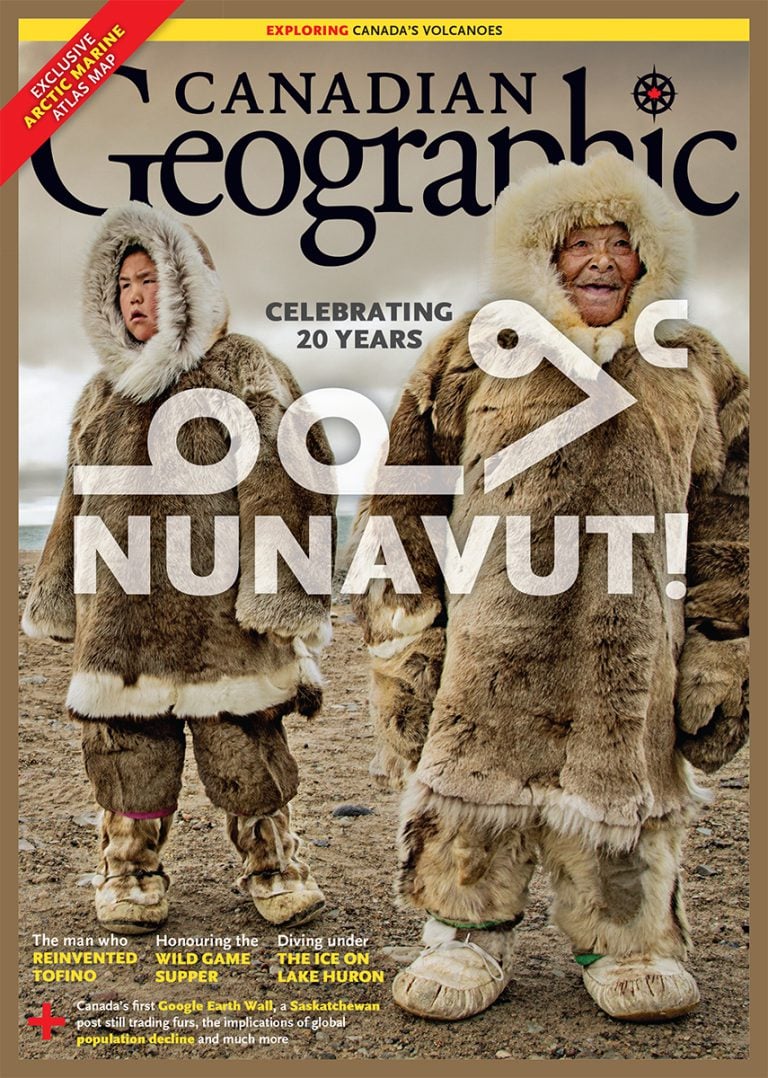
This story is from the March/April 2019 Issue

Places
Nearly wiped out in Alberta in the 1800s, plains bison are making a historic return to Banff National Park

Mapping
Maps have long played a critical role in video games, whether as the main user interface, a reference guide, or both. As games become more sophisticated, so too does the cartography that underpins them.
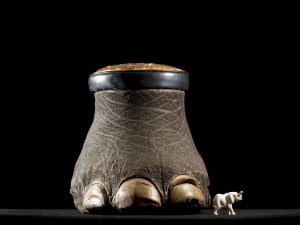
Wildlife
An estimated annual $175-billion business, the illegal trade in wildlife is the world’s fourth-largest criminal enterprise. It stands to radically alter the animal kingdom.

People & Culture
The story of how a critically endangered Indigenous language can be saved